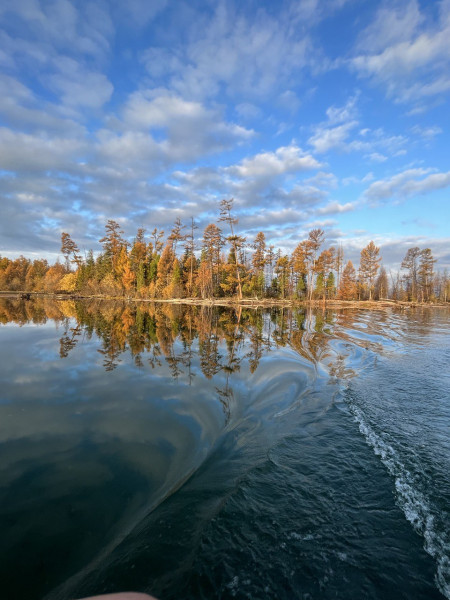Complex Circum-Baikal Expedition on board the R/V “G.Yu. Vereshchagin” from September 18 to October 1, 2023
The expedition was carried out within the State assignments: “Study of transformations of the state of water bodies and watercourses of Eastern Siberia in seasonal and long-term aspects in the context of climate change, geological environment and anthropogenic loads” (0279-2021-0005) (led by Fedotov A.P.), “Investigation of the advective and turbulent water exchange of Lake Baikal and its impact on the lake ecosystem, risks of catastrophic events” (0279-2021-0004) (led by Aslamov I.A.), “From cell to ecosystem: Research of the ultrastructure of hydrobionts and their communities in the evolutionary and ecological aspect by methods of cell biology and genomics” (0279-2021-0008 ) (led by Likhoshway Ye.V.).
The aim of the expedition was to conduct complex monitoring of abiotic and biotic components of the Baikal ecosystem in the period preceding the spring homothermia, to identify the regularities of their spatial-temporal dynamics; experimental study of mechanisms and processes affecting the distribution and circulation of matter in the water column.
During the expedition, according to the standard grid of the stations of longitudinal and transverse sections of the lake, the samples were taken at fixed depths from the surface to the bottom using the Carousel SBE-32 cassette-type sampler equipped with 24 bathometers of 5-liter volume each. Water samples were taken for chemical and gas analyses, and to investigate the distribution and species composition of phytoplankton. Phytoplankton and zooplankton samples were collected with a Juday net. The fieldworks were conducted in three basins of Lake Baikal, and in Barguzinsky and Chivyrkuisky Bays, and in Maloe More Strait. Water samples were collected at 44 stations and using with a Juday net at 26 stations. Water samples for hydrochemical analysis were taken in 10 rivers: Goloustnaya, Selenga, Buguldeika, Anga, Turka, Barguzin, Tompuda, Rel, Verkhnyaya Angara and Kichera. Hydrophysical measurements were conducted at 53 stations using a high-precision SBE-25 CTD-zond with additional sensors of dissolved oxygen and transparency.
With the main works along the course of the research vessel, surface temperature and electroconductivity of water, meteorological parameters, and aerosol concentrations were recorded; also, the gas bubble outlet was monitored using a hardware-software complex based on Furuno echo sounder with recording the data of echograms.
The total number of samples:
- hydrochemical analysis – 240
- to determine the concentration of dissolved methane – 560
- phytoplankton – 129
- zooplankton – 62














